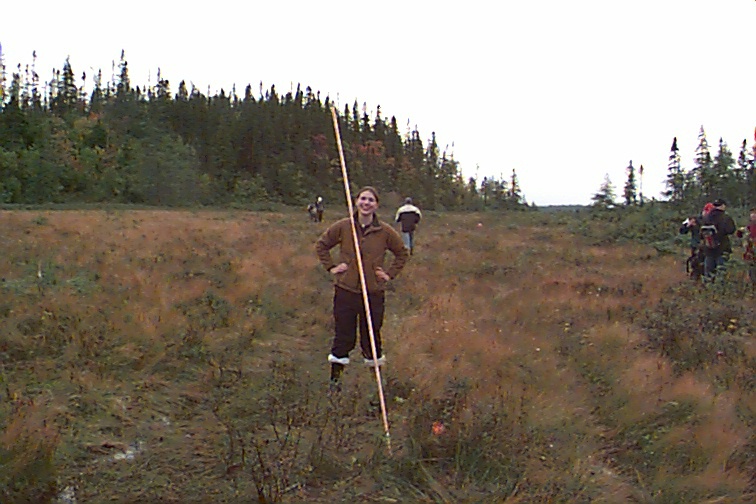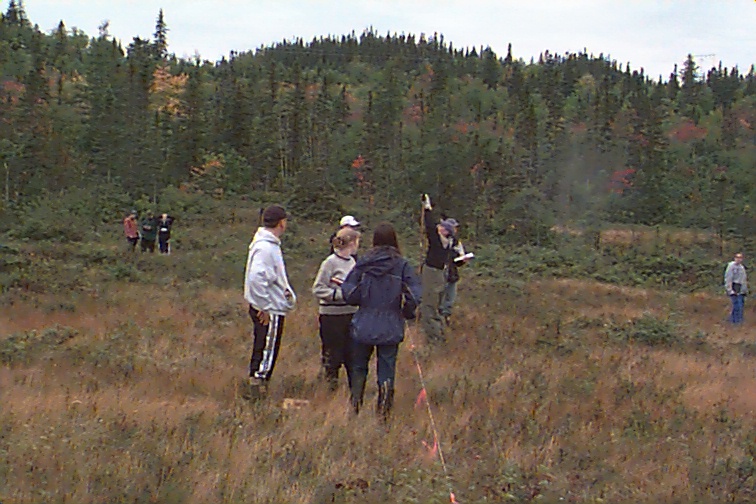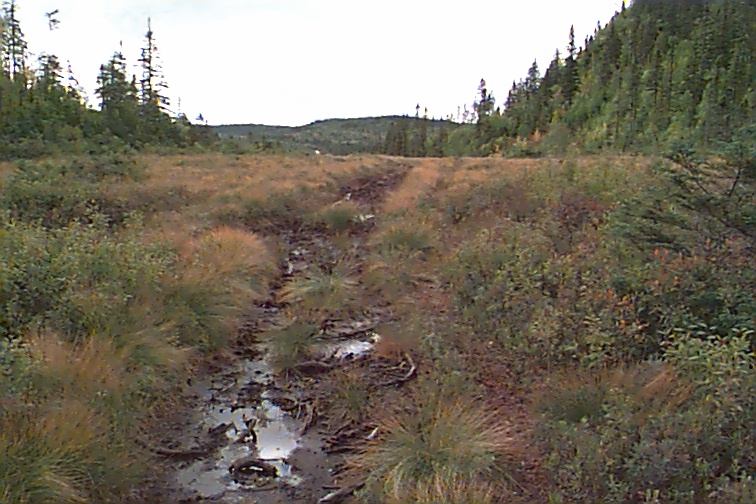Students are organized into groups and
six field stations have to be covered by each group. These field stations
consists of:
 We ask each student to find a comfortable location. They
are to make a journal entry about this area, how they feel about this bog
study and any other items that they feel is important to record at this
time.
We ask each student to find a comfortable location. They
are to make a journal entry about this area, how they feel about this bog
study and any other items that they feel is important to record at this
time. 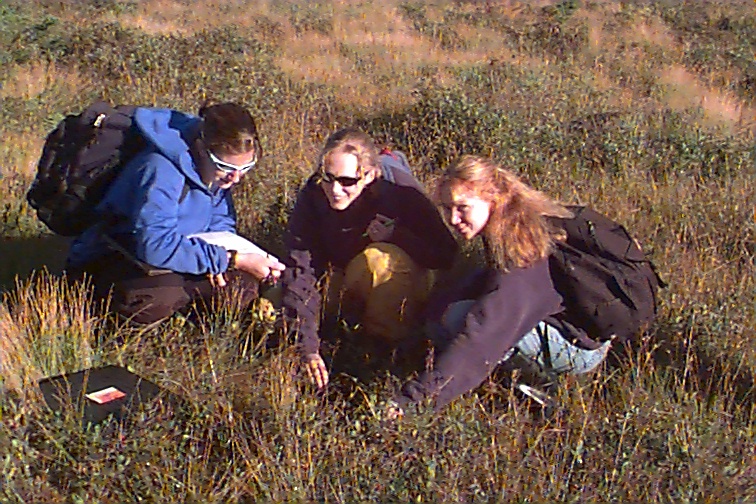 At
this station, each group must find a clean body of water, insert the pH
probe and record the value.
At
this station, each group must find a clean body of water, insert the pH
probe and record the value.
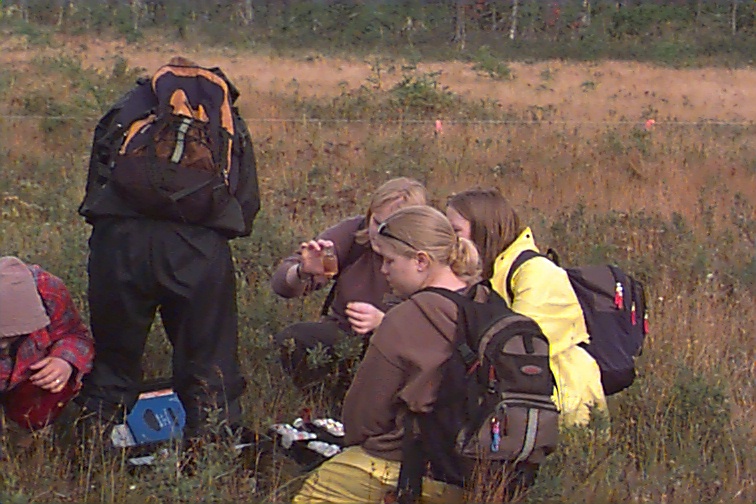
Each group will use a chemical test kit that has a standardized procedure for measuring the oxygen concentration in the water. The procedure involves several steps leading to a titration for dissolved oxygen in mg/L.
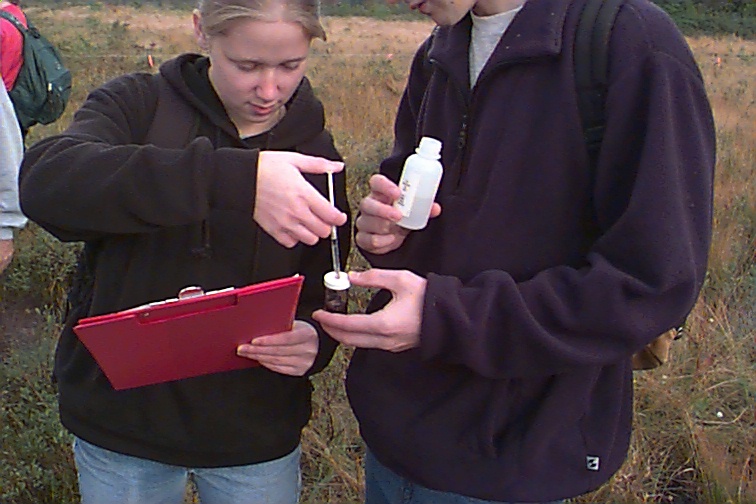 Using
the same chemical test kit, each group measures the dissolved carbon dioxide
concentration in a sample of water.
Using
the same chemical test kit, each group measures the dissolved carbon dioxide
concentration in a sample of water.
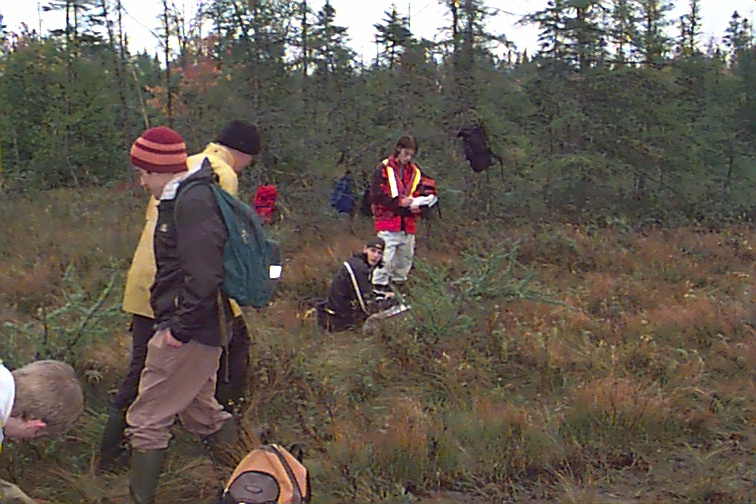 We
run a transact line across the bog. The group decided which plant they
will examine on this bog and then a 0.3 x 0.3 m square is tossed randomly.
The number of plants within this square are recorded. This procedure is
repeated 10 time along the transact line across the bog.
We
run a transact line across the bog. The group decided which plant they
will examine on this bog and then a 0.3 x 0.3 m square is tossed randomly.
The number of plants within this square are recorded. This procedure is
repeated 10 time along the transact line across the bog.
 Using
a long metal rod, the group follows another transact line marked at 2.0
m intervals. The rod is pushed into the bog until it strikes the bottom
of the bog. The depth is recorded and the values are placed on a grid.
The students can then visually see the former body of water's profile that
had undergone ecological succession.
Using
a long metal rod, the group follows another transact line marked at 2.0
m intervals. The rod is pushed into the bog until it strikes the bottom
of the bog. The depth is recorded and the values are placed on a grid.
The students can then visually see the former body of water's profile that
had undergone ecological succession.
Not all goes well sometimes.
The rod breaks and the process of retrieval
begins. In this case, the rod remains in the bog. Fortunately, Mr.
Spencer's Environmental Science class retrieved the rod the next day when
they arrived at the bog. 